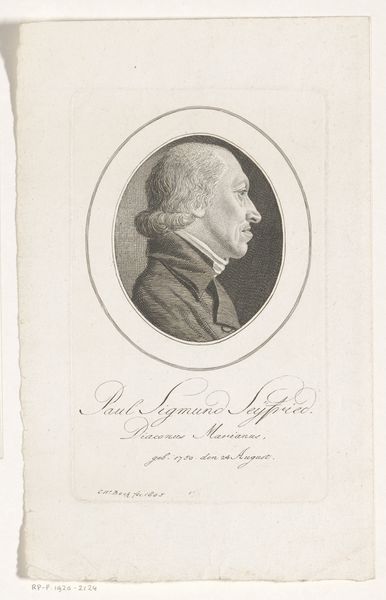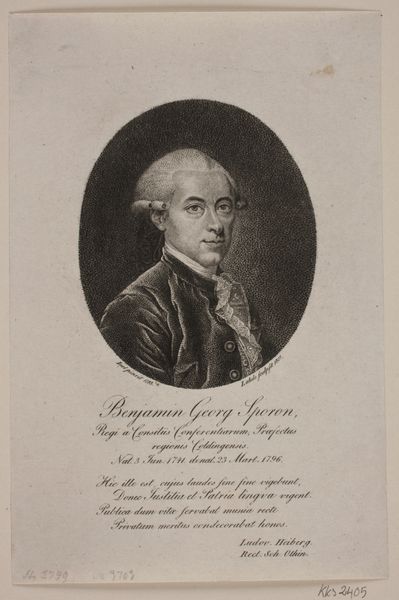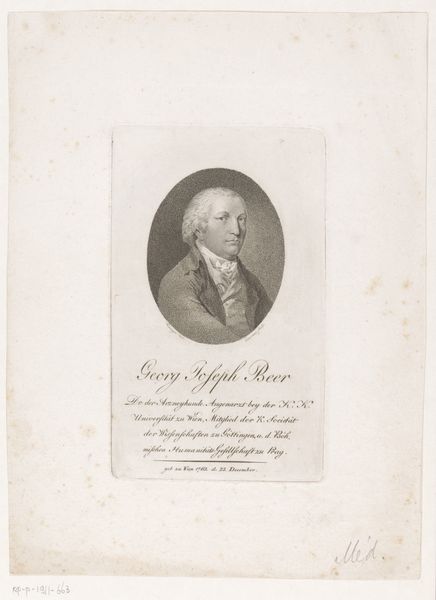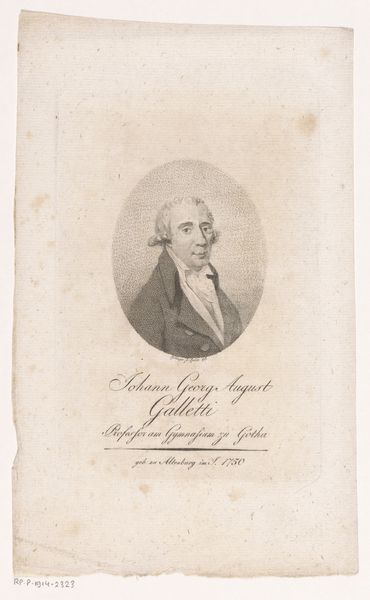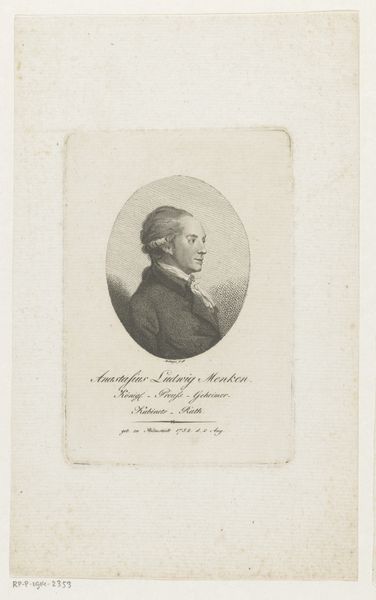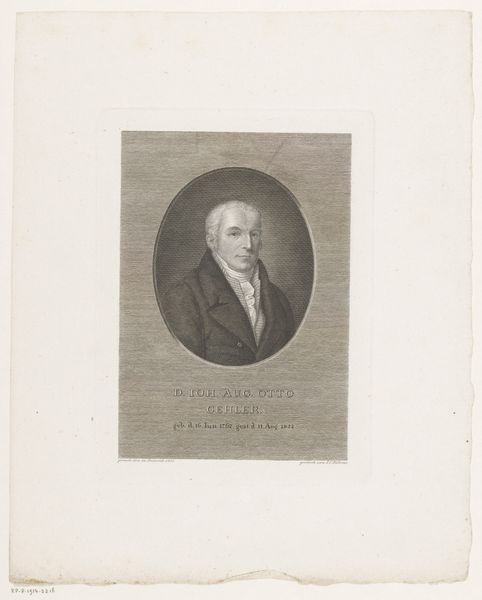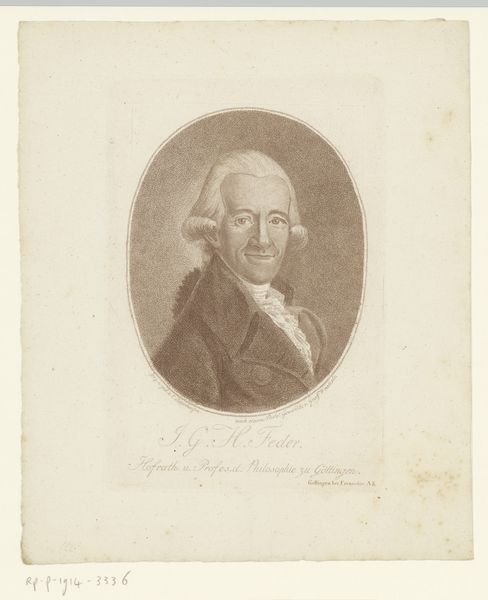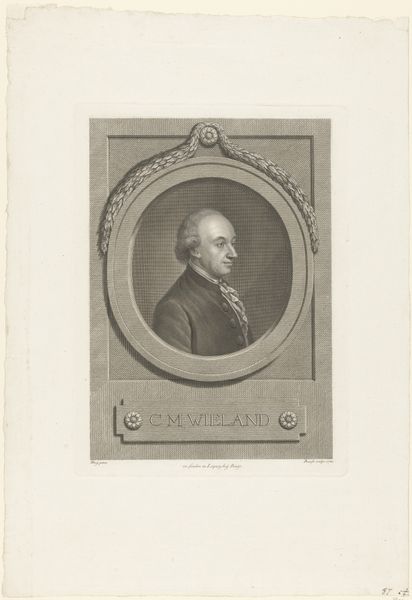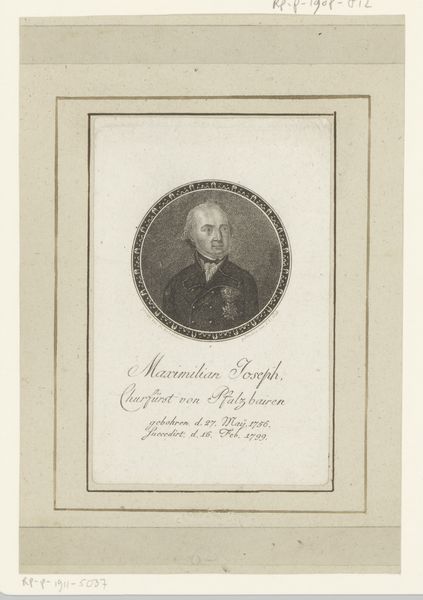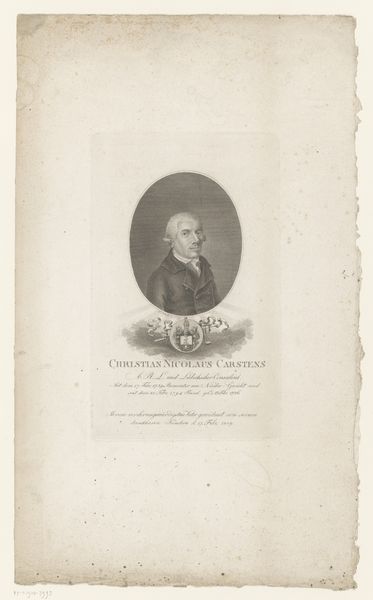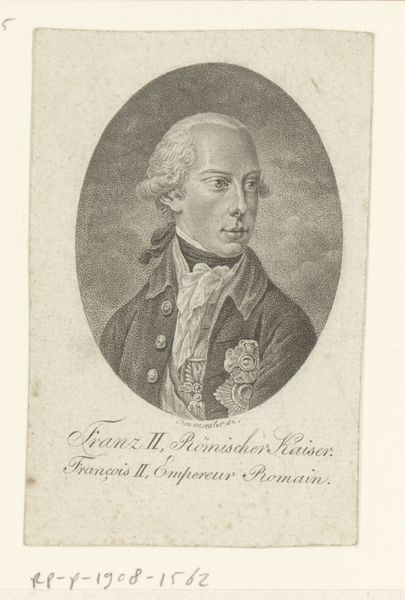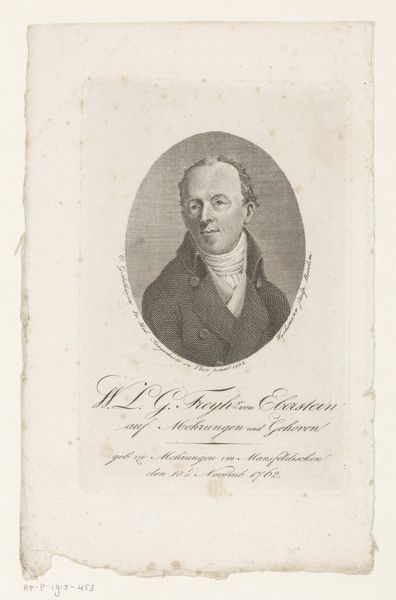
print, engraving
#
portrait
#
neoclacissism
# print
#
old engraving style
#
19th century
#
engraving
Dimensions: height 250 mm, width 172 mm
Copyright: Rijks Museum: Open Domain
Carl Hermann Pfeiffer made this print of Luigi di Gonzaga-Castiglione in the late eighteenth or early nineteenth century. The print presents us with a member of the European aristocracy at a moment of upheaval. Consider the conventions of portraiture at this time. Portraits of aristocrats tended to reinforce their power and status. Here, the sitter’s gaze is direct and his bearing confident. But the French Revolution, with its radical challenge to inherited privilege, had already begun in 1789. By the time this portrait was made, aristocratic power was under threat as never before. The inscription below the portrait hints at these tensions, referring to the sitter as a ‘prince’ while also evoking revolutionary ideas of liberty and equality. As historians, we can research the Gonzaga-Castiglione family and the artist, Pfeiffer, to understand the context in which this print was made. This helps us appreciate the complex ways in which art reflects and shapes social and political change.
Comments
No comments
Be the first to comment and join the conversation on the ultimate creative platform.
